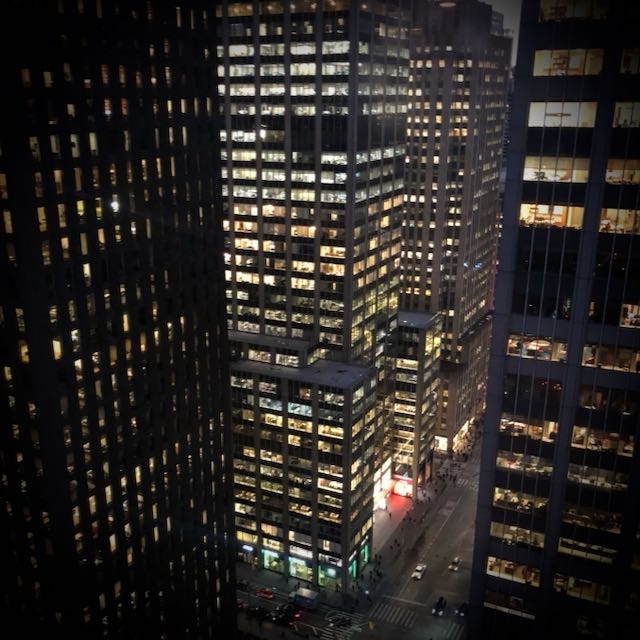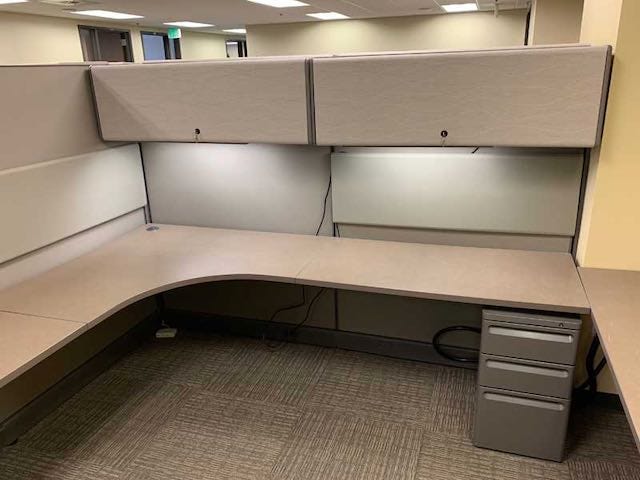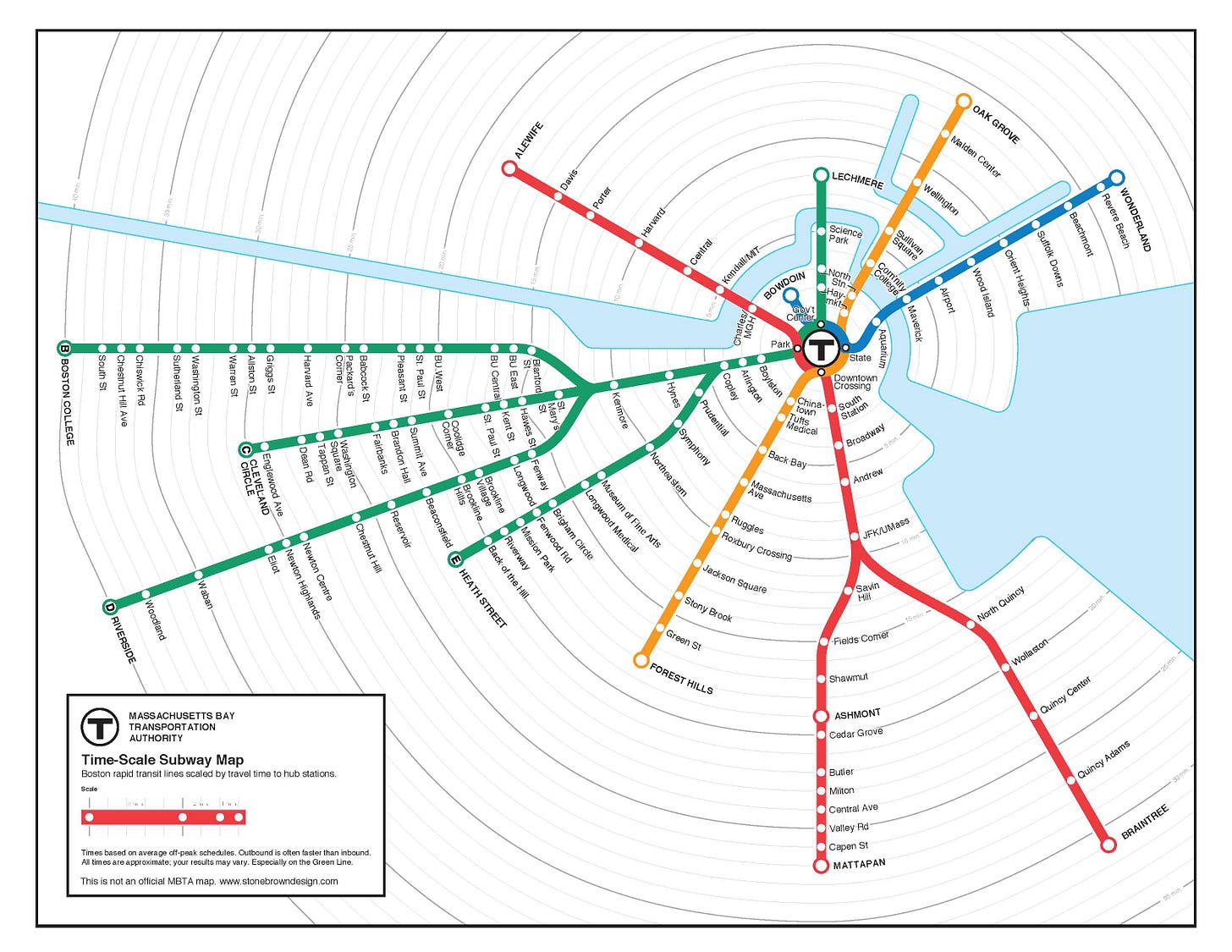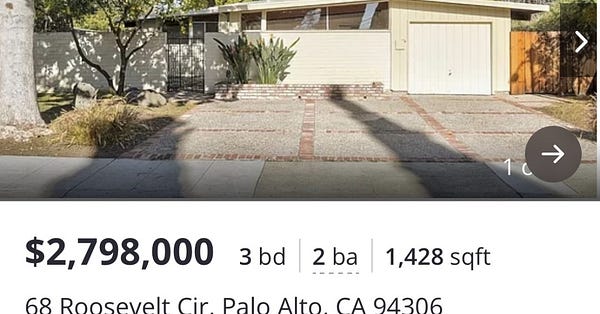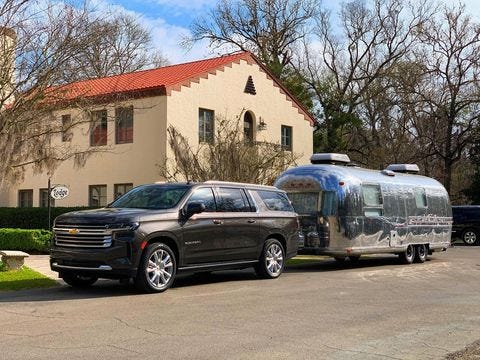Where Do You Work?
As flexible working arrangements become the norm, our houses, neighborhoods, and lives are overdue for course correcting.
Vintage Score!
Good morning and welcome to the Quarantine Creatives newsletter, a weekly companion to my podcast of the same name, which explores creativity, art, and big ideas as we continue to live through this pandemic.
If you like what you’re reading, you can subscribe for free to have this newsletter delivered to your inbox on Sundays:
Yesterday, we stopped into our local Savers thrift store and walked away with almost 100 vintage dishes from the 1950s made by The Old Curiosity Shop. Thanks to a 20% coupon I happened to have, this collection of dishes was $36!
If you click on the photo above, you can read more and see additional photos on my Instagram. We’ve been looking to upgrade our plates and bowls for years now, so this came at a good time. We don’t need 100 dishes, so we’re still assessing what to do with the extras, but they were only sold as a grouping, so we had to take the surplus.
In today’s newsletter, I have an essay exploring the ways in which technology will change the way that we work and where and how we choose to live.
Welcome Back?
As many companies are beginning to implement return to office plans, I can’t help but think that this move will ultimately be temporary.
For one thing, there’s the threat of another COVID wave, brought on by the BA.2 variant that is currently sweeping through much of Europe and is beginning to dominate cases here in the U.S.
However, even if BA.2 fizzles out and does not lead to more shutdowns, the bigger reason I don’t expect a mass return to a physical office long term is that after two years of being remote, many employees have found it to be a better way to work.

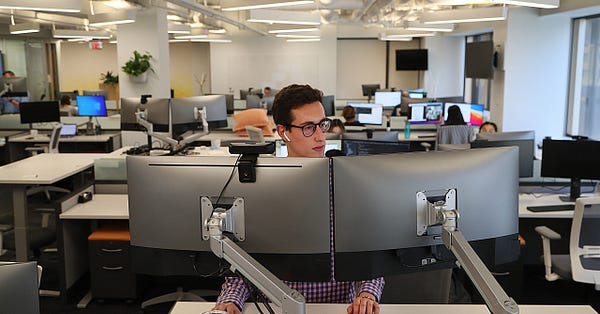
As I’ve stated in the past, there are plenty of jobs that require being at work. But there are also many, many more that can be done just as effectively from anywhere with an internet connection. More than we thought were possible or practical two years ago.
On my podcast, Arun Rath described hosting a local NPR show from home, Glen Keane talked about directing an animated feature remotely, and Ginger Zee shared about reporting on the weather for Good Morning America from a custom built home studio.
Anecdotally, I find that Baby Boomers and older Gen Xers are more open to returning to a workplace. Perhaps not growing up as “digital natives” is a factor.
My generation (Millennials) and those younger than me were raised online and seem to not feel the same urgency to be in a physical space to create meaningful work. We are comfortable existing in a digital world and are less dependent on face-to-face interactions to foster a strong bond and a shared purpose.



Yes, remote work may have some hiccups to overcome, but it also has some big advantages.
I am terrible with remembering names, yet on a Zoom call, everybody is wearing a virtual name tag all the time. The power dynamics of who sits in which seat around a table are also gone. On Zoom there is no head of the table; we are equals in both size and ability to speak.
Another downside to working in an office is that the distractions are many and constant- loud talkers, loud typists, smelly perfumes, smelly lunches, humming fluorescent lighting. All of these things diminish concentration and thus, productivity.
In the next few months, people may follow their CEOs’ demands to be back in the office. Yet my prediction is that even if many younger workers reluctantly return, they will simultaneously be eyeing better remote opportunities.
The companies that embrace flexibility will end up with a deeper pool of talent a year from now than those that tie physical presence to productivity.
The Cost of an Office
Working 9 to 5 takes a toll.
There’s a financial cost of commuting, which has only gotten worse with gas prices spiking in recent weeks. There’s a high environmental cost as well.
I read a great article written by A.C. Shilton for DAME Magazine in 2019 that talks about the social costs of office culture, especially for minorities, women, and other people that are not at the top of the power structure- it’s worth a read!
Finally, there’s the cost of lost time that could be spent doing other things.
That time not spent in traffic or riding a train gives us time to explore other hobbies and interests. For me, that has included this newsletter and new episodes of the podcast. It also means more time with my family while my kids are at a critical age.
I’ve heard speculation that the isolation of working from home is damaging and people miss the socialization of the office, but I think relying on professional contacts for friendship can be problematic.
I’ve worked at plenty of jobs that preach about how work is like family. It’s a bit dysfunctional that we put so much pressure on our coworkers to also be our primary social group, although it makes sense when our days are so full that we rarely have time to spend with our families, friends, or those with common interests.
When we allow ourselves to devote time to more than just work, it allows us to connect with other like-minded people and do cool things- play music, learn a new skill, or even just being more present with our families.

So much of our identity can be tied up in who we are as professionals. It can be one of the first things we’re asked about at dinner parties, or even how we are introduced by some of our friends to others.
In creative fields, this can be especially tough to separate, as we are often paid for our artistic pursuits, so who we are professionally and how we chose to express ourselves creatively get tied up into a messy knot.
I have spent two years untangling that knot myself, being okay with my identity also including things like growing shiitake mushrooms or taking hikes, even as I put creativity and energy into my career.
Hub No More
If my suspicion that we are moving to a more remote world is even partially right, this could cause a major shift in our built environment too.
Interstates and rail lines are designed to move people into the urban core and suburban development patterns follow those routes. We build houses to be near to jobs.
But if you remove that magnetic pull of a hub and we can truly work anywhere, what are we left with, or more importantly, where will we chose to go?
There will undoubtedly always be people that prefer a more urban existence. They like being near restaurants, nightlife, and entertainment. While cities may struggle to adapt as some office workers flee, those places will not implode.
The current housing crisis is partially an issue of inventory, but it’s also an issue of distribution. We have too many houses in places where people don’t want to live, and not enough where they want to live, or at least, where they can find lucrative job opportunities.
Addison Del Mastro writes a great blog about urban planning and our built environment. In a post last week, he talked about the absurdity of a basic house in Palo Alto selling for $3 million, while a similar structure in Detroit may sell for $4,000 (he may have been exaggerating the low end).
If we uncouple where we work with where we live, more people might move out of the Bay Area or Los Angeles to cities like Detroit or Buffalo, enjoying a lower cost of living and perhaps stabilizing markets on either end of the spectrum.
Other people may look beyond typical cities and suburbs, perhaps to be nearer to family, enjoy a lower cost of living, or be near recreation like mountains or beaches.
There may be a surge of interest in rural areas or small towns that have been neglected but show great promise if the right people are willing to make an investment. I talked to Jimmy DiResta about this on the most recent episode of the podcast.
I cannot predict yet where people will go, but I suspect we will see big changes in where we move over the next decade or so. The Great Resignation may lead to another Great Migration, but instead of looking for work, people will be looking for life.
Attics, Sheds, and Trailers
Moving to a remote workplace will not only change where we live, but it could also mean big changes in how we live.
The demand for homes with flexible space may increase. And I say flexible space, not additional square footage deliberately. Having an extra bedroom that can be converted into a home office is nice, but I suspect the need for office space may manifest itself differently on our blueprints, since an office requires much less space than a bedroom.
Home office space could be carved out of the space above a garage or finishing an attic (that’s what we have in our house). Office space may also take the form of detached structures, like sheds, accessory dwelling units, or possibly even travel trailers which can provide amenities like electricity, heating, and cooling for a few thousand dollars.
My friend Scott Carty was a broadcaster in Seattle for many years, but during the pandemic, he shifted to building sheds and other small buildings that can be used as flexible living space, including as home offices. He talked with me about it on the podcast, and his company’s Instagram feed gives you a sense of what could soon become a standard expectation from home buyers in real estate listings.


If we’re home more, would we want larger yards that can support our favorite ways to recreate, or would we want smaller yards but robust parks and community centers within walking distance? Nobody knows the answer for sure.
For years, I have been fascinated with the concept of New Urbanism, which was a school of architectural thought prominent in the 1980s-90s that attempted to recreate the best elements of early twentieth century small town life in new developments.
One prominent example of this is Celebration, Florida. It’s a town built by Disney in the 1990s that emphasizes front porches, walkable streets, and local amenities. When I was working at This Old House, I made sure to include a tour of Celebration in one of our episodes shot in Florida:
I have visited Celebration a number of times on my trips to Florida and a part of me fantasizes about retiring there. I love the idea of passing my time in a rocking chair on a front porch, then walking into town for a coffee, perhaps because I grew up in a neighborhood from the 1920s that offered just that.
While New Urbanist communities never really took off at a large scale, some of the core ideas have shaped newer “lifestyle center” shopping districts and mixed use developments that are being built right now.
If we de-emphasize the office and are spending more of our free time at home, will we begin to demand communities that can meet more of our needs throughout the full day than just a place to park our cars and sleep at night? I sure hope so. I don’t know that New Urbanism is the only solution, but it is one that I think deserves more exploration and another look.
The combination of technology, fuel and housing costs, and two years of living through a global pandemic seem to be putting us onto a very different path than could have been imagined a decade ago. People are recalculating what they expect from a job and what they’re willing to sacrifice. Where we are in another ten or twenty years is anybody’s guess, but I have a strong feeling, a cubicle will be less and less a part of the equation.
What’s Next
In last week’s newsletter, I teased an interview with UK puppeteer Warrick Brownlow-Pike, who plays Gonger on Sesame Street that was supposed to debut last Thursday.
I have since decided to move from a weekly podcast schedule to biweekly, so Warrick’s interview will be live on Thursday this week, and new episodes will be every other week on Thursdays. If you’re not already, please subscribe to have the show in your podcast feed.
Thank you for your patience as I recalibrate how best to fit the podcast into my other responsibilities.
I have exciting news to share: You can now read Quarantine Creatives Newsletter, along with lots of other amazing newsletters in the new Substack app for iPhone.
With the app, you’ll have a dedicated Inbox for my Substack and any others you subscribe to. New posts will never get lost in your email filters, or stuck in spam. Longer posts will never cut-off by your email app. Comments and rich media will all work seamlessly. Overall, it’s a big upgrade to the reading experience.
The Substack app is currently available for iOS. If you don’t have an Apple device, you can join the Android waitlist here.
If you have questions, comments, thoughts, ideas, or anything else that you’d like to share, please feel free to email me anytime.
If you’d like to catch up on past episodes of the Quarantine Creatives podcast, they can be found on Apple Podcasts, Spotify, or wherever you listen.
Please consider sharing this with a friend that you think might enjoy reading this, or better yet, share it on social media so you can tell hundreds of friends!
If you’ve missed past issues of this newsletter, they are available to read here.
Stay Safe!
Heath






